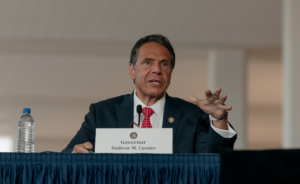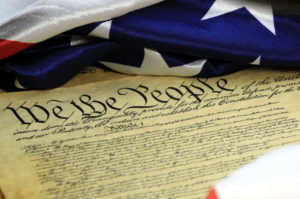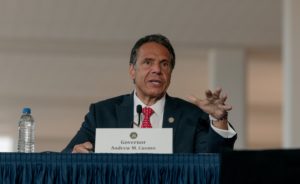Governor Andrew Cuomo’s gun violence emergency order shows why unchecked executive powers are so dangerous

During the COVID-19 pandemic, governors across the country claimed extraordinary emergency power.
For weeks and then for months and then for over a year, they used this purported authority to unilaterally shut down businesses, enact health and safety measures, and issue sweeping emergency orders.
Such broad emergency power may have made sense in the earliest days of the pandemic. The spread of COVID-19 was sudden and states were caught off guard. Action was needed before the legislatures in many states could meet and confer.
But as weeks turned to months, governors continued to act under a state of emergency even after lawmakers had ample time and capacity to act. Such power has a seductive allure. It is no wonder that broad invocation of emergency power has historically led to the collapse of democracies into tyranny and autocracy. Once seized, it is difficult to let go of power.
Indeed, even now when the threat of COVID-19 has hit a lower point, governors have refused to relinquish their power. For instance, California’s Governor Gavin Newsom will not end the emergency until the virus is “extinguished,” an elusive end date that may never come. And governors such as Kentucky’s Andy Beshear and Michigan’s Gretchen Whitmer have fought tooth and nail against legislative efforts to end the state of emergency.
Unfortunately, now that governors across the country have gotten a taste of unrestrained power, they will be tempted to abuse it.
Case in point, earlier this month Governor Andrew Cuomo of New York declared a state of emergency over gun violence. Whatever your thoughts about the Second Amendment, gun ownership, and the best solution to end gun violence, this declaration should alarm you.
Governor Cuomo has equated a long-standing and ever-present issue, the risk of gun violence, with a rapid and unanticipated natural disaster like the pandemic. Governor Cuomo’s disaster emergency has no end date and will last “until further notice”—perhaps forever.
By declaring a public health emergency, the governor claims power to take whatever action he deems necessary to prevent gun violence without authorization for the legislature. Just as Governor Cuomo shut down restaurants and theaters across the state in response to the COVID-19 pandemic, he could do the same to gun shops in the name of responding to the emergency. And the governor could act without legislative input and without procedural checks and balances, like soliciting public comment.
So far, the governor has been somewhat restrained in his use of his emergency power under his artificial gun violence disaster. But already he has suspended a host of laws and directed state agencies “to take appropriate action … in responding to and recovering from this disaster.” Sound familiar?
We live in a big and ideologically diverse country. If the trend of using emergency power to address politically and socially fraught problems spreads, chances are it will be used in a way that you strongly disagree with.
Liberal governors could use this power to combat gun violence and climate change. Conservative governors could use it to combat abortion or the teaching of critical race theory. Individual liberty and the rule of law will be the casualties as state legislatures are pushed to the side and constitutional rights are trampled upon.
Governor Cuomo’s actions show clearly why emergency powers must be used in a restrained and narrow fashion.
Legislatures must act now to limit the circumstances of when a disaster can be invoked, narrow the scope of a governor’s emergency power, and reduce the risk that a perpetual state of emergency will become the new normal.
Pacific Legal Foundation has proposed model emergency powers legislation that eight states have adopted in part, which would restore constitutional checks and balances. And if governors continue to indiscriminately invoke and utilize emergency powers, PLF litigators will be there to challenge them in court to ensure the rule of law and protect individual liberty.











